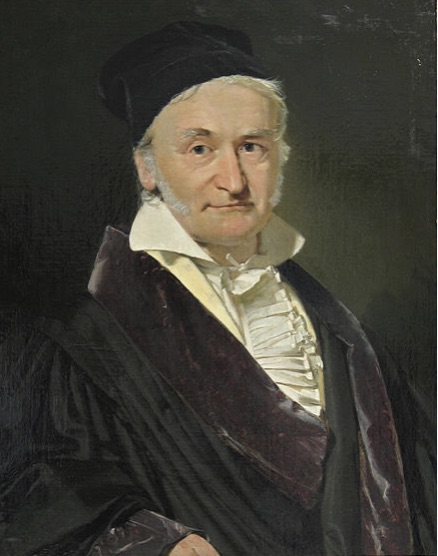
Carl Friedrich Gauss was born on April 30, 1777 in Brunswick, Germany. He was a calculating prodigy, whose remarkable gifts emerged when he was 3 years old, enabling him to perform long and intricate computations in his head and emerge with the correct answer at remarkable speed. When he was 15 years old, Carl anticipated the Prime Number Theorem asserting the number of prime numbers less than the integer n is approximately n/log n as n becomes large. By age 18 he had developed a theory of errors in measurement. Out of this work, the ubiquitous normal distribution and the method of least squares emerged, eventually becoming an indispensable tool of statistics. About this time, he also discovered the conditions under which a polygon of n sides is constructible with ruler and compasses.
At the age of 22, Gauss proved the Fundamental Theorem of Algebra asserting that a polynomial of degree n has n zeros in the complex plane. Recognizing that of the four arithmetic operations, division was the most troublesome, he sought a method of converting division into multiplication where possible. This work led him to the publication of his masterpiece, Disquisitiones Arithmeticae in 1801, when he was 24 years of age. In this difficult treatise, he developed modular arithmetic, in which the operation of division is replaced by multiplication with inverse elements. With this publication, Gauss did for number theory what Euclid had done for geometry: he changed the subject from a collection of unconnected problems into a coherent branch of mathematics. He is also credited with anticipating non-Euclidean geometry, but refrained from publishing his discovery, fearing it would be met with criticism.
Gauss is judged by historians of mathematics to have been a mathematician without peer (and on the same level as Archimedes and Newton). Gauss’s genius for mathematics remained with him until his death from a heart attack in his 78th year. His motto pauca sed matura, meaning “few, but ripe” described his own work as limited in scope, but deep in content. The search for the source of this genius, led to an inspection of Gauss’s brain. Though it was found to weigh 1492 grams–only slightly above average–it was observed to have highly developed convolutions that may offer insight into the matrix of this mathematical genius.
